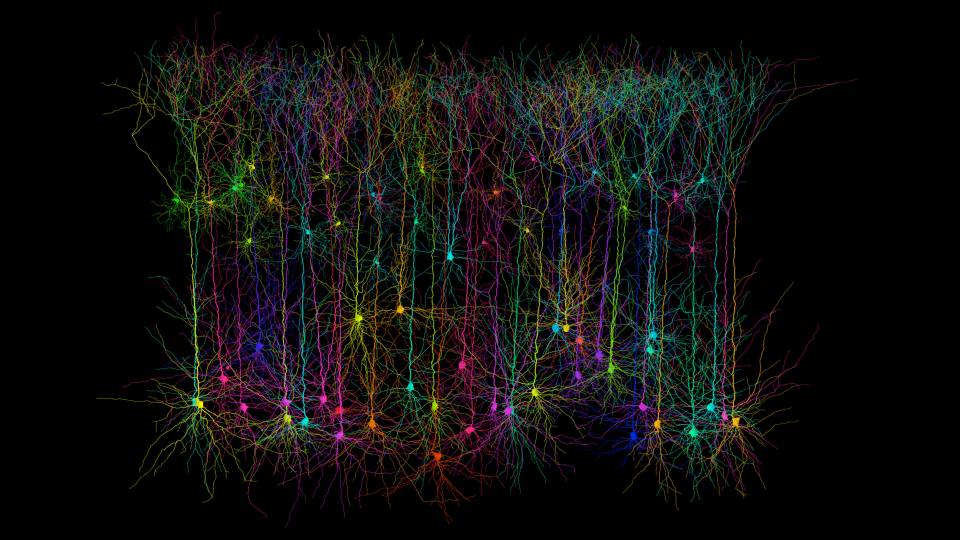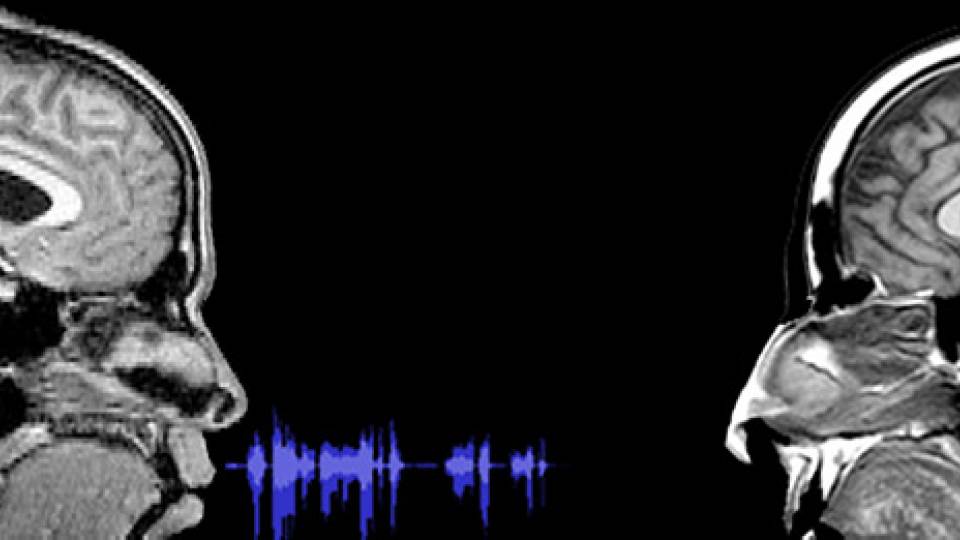Princeton University is expanding its teaching and research
capabilities in neuroscience -- considered by many the next field ripe
for significant scientific breakthroughs -- by launching an institute
that will bridge many disciplines and take a new approach to studying
the brain and nervous system.
"Neuroscience is one of the most exciting frontiers of human
understanding right now," said President Shirley M. Tilghman. "We're
seeing path-breaking results already in this field that are changing
the way we understand the human brain and human decision-making.
There's a deep sense that some of the most important discoveries of the
next few decades will come in this field."
"We already have great strengths in neuroscience in both our molecular
biology and our psychology departments, and we want to be able to build
on those strengths," added Provost Christopher Eisgruber, noting that
faculty members from other departments such as mathematics, physics,
computer science and economics also are conducting research with
applications in neuroscience. "So this is really an example of an area
that is not only sizzling in terms of its scientific research right
now, but that has an extraordinary capacity to span what happens
throughout the University, and that is attracting students at all
levels."
Under the working title of the Princeton Institute in Neuroscience, the
entity was created in embryonic form last spring under the leadership
of Jonathan Cohen, the Eugene Higgins Professor of Psychology, and
David Tank, the Henry Hillman Professor in Molecular Biology, who has a
joint appointment in physics.
This fall, a proposal prepared by the two was scrutinized and endorsed
by an external review committee of leading scientists from around the
country. Following a presentation to University trustees this month,
administrators are moving ahead with plans for the institute, including
a substantial fund-raising effort.
Cohen and Tank will serve as co-directors of the new institute (see related story). They
view the enterprise as a stimulus for teaching and research in
neuroscience and related fields, as well as an impetus for
collaboration and education in disciplines as wide ranging as economics
and philosophy.
Distinctively different
The potential for major advancements in the study of the brain over the
past 30 years has sparked the creation of some 300 training programs in
this field, according to the Society for Neuroscience. The Princeton
institute will take an approach that is distinctively different from
other programs, according to those involved.
"Whenever there are fields like this one that are at the intersection
between pure science and some work that goes on in medical schools, we
always ask how Princeton can do this best so that our absence of a
medical school becomes an advantage for us rather than a disadvantage,"
Eisgruber said. "The proposal that Jonathan and David put together
really shows how Princeton can do neuroscience in a way that will be
very effective here."
Princeton's institute will focus more on understanding principles of
function and interaction that apply across the brain, rather than
exclusively on individual components.
"In some sense, a main emphasis of neuroscience over the last century
has been characterizing the elements, such as neurons and synapses,
that make up a brain," Tank said. "One of the goals of the institute is
to understand how the whole system works together as one unit from all
of the very complex interactions and underlying parts."
Fundamental to taking this "systems approach" is an understanding of
neural coding and dynamics. Neural coding refers to the way that
information is represented by the activity patterns of brain cells.
Neural dynamics involves how neural circuits manipulate, modify and
store information in the process of controlling behavior and cognition.
Examples of behaviors that rely on complex neural dynamics include
perceiving a visual object, pursuing a train of thought and making a
decision.
This approach will draw upon one of Princeton's historical strengths,
setting the institute apart from other such programs. "Tackling these
problems will require a level of quantitative description and formal
theory that has not been previously emphasized in neuroscience and will
further help to differentiate us," Tank said.
Princeton collaborators will bring their expertise in quantitative
disciplines such as mathematics, physics, engineering, computer science
and economics to bear on these questions. There will be a particular
emphasis on the close connection between theory, modeling and
experimentation using the most advanced technologies.
"It's all about a balance between quantitative theory and
experimentation," Cohen said. "Much of existing theory has not been
very precise or very mathematical, and there hasn't been an extensive
use of computer simulations to understand the dynamics of brain
function.
"The brain is arguably the most complex device in the universe," he
continued. "There are 100 billion nerve cells in your brain, and each
makes contact with thousands of other neurons, making for an
overwhelmingly intricate system. Despite that fact, theories are often
proposed in verbal terms."
Cohen said that Princeton has a rich environment to mine for
quantitative methods that might apply to neuroscience. "Having access
to the sorts of tools that engineers have developed for studying
complex systems -- turbulence, weather patterns, fluid flow -- as well
as those that mathematicians and statisticians have developed for
creating new algorithms specifically tuned to the sorts of data we
collect is an incredible advantage.
"We hope to be quantitatively sophisticated in two ways: with regard to
the development of precise, formal theories about how the brain works
and gives rise to behavior and the mind; but also in maintaining our
capacity for doing state-of-the-art experimentation and being able to
analyze the large data sets that it generates," he said.
Read Montague, the Brown Foundation Professor of Neuroscience at the
Baylor College of Medicine and a visiting member of the Institute for
Advanced Study, applauds Princeton's efforts to more closely connect
theory and experimentation.
"In a bold move that recognizes the growing need for a close
collaboration between theory and experiment in neuroscience, Princeton
University is one of the first to recognize the need to organize
leading theorists and experimentalists under a single entity," he said.
"In the past, various foundations ... have invested in theoretical
approaches to neuroscientific problems; however, the need is bigger
than such efforts can adequately address. I suspect that many
institutions will follow Princeton's lead in the near future, and we
will see institutes for theoretical and experimental neuroscience
popping up at universities all around the world."
The establishment of the new institute is a continuation of the
pace-setting role that Princeton's neuroscience program has played,
according to another scientist.
"The Princeton neuroscience group has a spectacular history of
experimental innovation, and strength in theory and computation that
runs from math and physics to biology and psychology," said Cori
Bargmann, the Torsten N. Wiesel Professor and head of the Laboratory of
Neural Circuits and Behavior at Rockefeller University.
"On the experimental side, they're known for developing new and better
ways to watch the brain work, whether that's the whole brain or just
one part of one neuron," said Bargmann, a member of the external review
committee that evaluated Princeton's proposal. "But the brain is
complex, and theoretical and quantitative approaches are going to be
central to understanding cognition, thought and higher-order brain
function. Some of the most influential and provocative theories about
the nervous system have been generated by Princeton scientists. What's
special here is the extent to which theory and experiments will inform
and challenge each other."
Teaching mission
One of the most important objectives of the new institute will be to
provide Princeton undergraduates and graduate students with training at
the forefront of neuroscience.
"We intend for the institute to have a very strong teaching mission,
both at the undergraduate and graduate level," Tank said. "There is
growing interest among the undergraduates in this discipline, and the
institute will support the classrooms and laboratories needed for our
curriculum leading to the neuroscience certificate."
Princeton has been steadily strengthening its resources in neuroscience
since the late 1990s, when it stepped up faculty recruitment in the
field through the efforts of Thomas Shenk in molecular biology and Joan
Girgus and Marcia Johnson in psychology. In 2001 under the leadership
of Cohen and Lynn Enquist, now chair of the molecular biology
department, Princeton established an undergraduate neuroscience
certificate program that has enrolled in it 30 students each year. That
program, which is growing in size, will be housed in the institute,
along with the graduate program in neuroscience, which currently
enrolls about 50 Ph.D. students spread across seven departments.
Cohen and Tank plan to integrate, consolidate and expand the curriculum
for both programs and to hire new faculty to teach and conduct
research. Faculty members will have joint appointments with the
institute and with their home departments.
In addition to providing centralized curricular resources for students
and faculty, the institute will offer access to state-of-the-art
instruments for studying the brain. In 2000, the University acquired a
functional magnetic resonance imaging (fMRI) scanner, becoming the
first institution to have a human brain imaging facility outside of a
medical setting. The University also has high-tech facilities for
optical laser scanning microscopy that can monitor and control
signaling in individual neurons.
With successful fund-raising efforts, the directors hope to bring the
various advanced instrumentation facilities as well as new teaching
laboratories together in one location, and create a unique, integrated
facility that will span from the study of single neurons to whole brain
function under a single roof. The campus planning project will consider
potential locations for such a facility, focusing principally on areas
along Washington Road south of Icahn Laboratory, home of the
Lewis-Sigler Institute for Integrative Genomics.
The two see the new institute as a place that will not only serve as a
resource for study in the scientific disciplines, but one that will
reach into many other fields as well.
"There's a burgeoning interest in the role that neuroscience is
beginning to play in a variety of other fields, including the social
sciences, the humanities and even the law," said Cohen. "The Supreme
Court last year had a case in which it cited brain imaging evidence as
a relevant factor. This raised serious questions about the current
state of such evidence, and how it should be interpreted. We should be
educating the next generation of people who are going to be in the law
and on the benches to understand what these data mean.
"There are also growing interactions between neuroscience and other
disciplines, such as ethics and economics," he continued. "For example,
advances in our ability to image brain activity have begun to raise
questions about how much such methods can tell us about people's
internal mental states, and how such information could and should be
used. Brain imaging studies have also begun to address questions about
the very basis of our ethical principles, for example to what extent
these are influenced by emotional responses in addition to rational
principles. And studies of people making economic decisions have raised
similar questions. Traditionally, these questions have been the
province of the social sciences and philosophy. Now, however,
neuroscience is beginning to provide evidence that is directly relevant
to these questions."
"The importance of neuroscience is going to grow over the coming years
into disciplines you wouldn't have previously thought were related,"
Cohen said.


